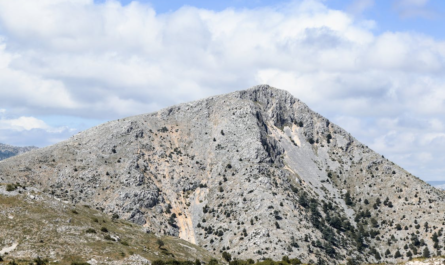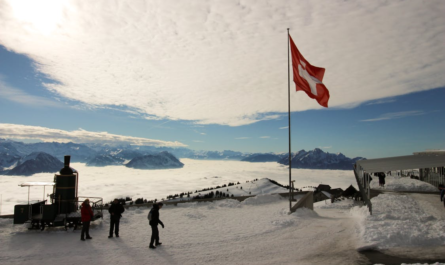Mount Rigi, often referred to as the “Queen of the Mountains,” is a stunning alpine destination located in the heart of Switzerland. Situated between Lake Lucerne, Lake Zug, and Lake Lauerz, this picturesque mountain is renowned for its breathtaking views, charming hiking trails, and, most notably, its unique alpine flora. For nature lovers and botanists alike, Mount Rigi offers a spectacular opportunity to observe a diverse range of plant species that thrive in its varied climatic zones.
This guide delves into the remarkable flora of Mount Rigi, exploring the different types of vegetation found at various elevations, the best times to visit, and how to responsibly enjoy this natural paradise.
The Ecological Zones of Mount Rigi
Mount Rigi’s diverse flora is shaped by its varying altitudes and microclimates. The mountain can be divided into three primary ecological zones:
1. Lower Slopes (600m – 1,200m) – Deciduous Forest Zone
The lower elevations of Mount Rigi are dominated by lush deciduous forests, consisting mainly of beech (Fagus sylvatica), maple (Acer pseudoplatanus), and ash (Fraxinus excelsior) trees. These forests provide a rich habitat for numerous wildflowers and ferns, including:
- Lily of the Valley (Convallaria majalis) – A fragrant, bell-shaped white flower found in shaded woodland areas.
- Wood Anemone (Anemone nemorosa) – A delicate, white-flowered species that blooms in early spring.
- Wild Garlic (Allium ursinum) – Known for its strong scent, this plant carpets forest floors in springtime.
- Common Hepatica (Hepatica nobilis) – A small but striking purple-blue flower that thrives in shaded woodland areas.
- Dog’s Mercury (Mercurialis perennis) – A modest green-flowered plant that is an important indicator of ancient woodlands.
2. Mid-Elevations (1,200m – 1,800m) – Montane and Subalpine Meadows
As you ascend, the dense forests give way to montane meadows bursting with colorful wildflowers. These areas, often grazed by Swiss cows, offer a spectacular floral display in summer. Some of the most notable species include:
- Alpine Gentian (Gentiana alpina) – A striking blue flower that thrives in open grassy areas.
- Edelweiss (Leontopodium alpinum) – The iconic Swiss flower, known for its woolly white petals and rarity.
- Mountain Arnica (Arnica montana) – A medicinal plant with bright yellow flowers, used for its anti-inflammatory properties.
- Pasqueflower (Pulsatilla alpina) – A delicate, fuzzy flower that emerges in early spring, marking the arrival of warmer weather.
- Masterwort (Astrantia major) – A unique star-shaped flower that adds a touch of elegance to alpine meadows.
3. Summit Zone (Above 1,800m) – Alpine Tundra
At the highest elevations of Mount Rigi, where temperatures are lower and conditions more extreme, only the hardiest plants survive. The flora here consists of specialized alpine species that have adapted to wind, cold, and rocky terrain, such as:
- Cushion Pink (Silene acaulis) – A low-growing plant forming dense mats of pink flowers.
- Alpine Saxifrage (Saxifraga oppositifolia) – One of the earliest bloomers in spring, often found clinging to rocky crevices.
- Moss Campion (Silene exscapa) – A tiny, resilient flower that adds a splash of color to the high-altitude landscape.
- Glacier Buttercup (Ranunculus glacialis) – A hardy species with delicate white flowers found near snow patches.
- Alpine Willowherb (Epilobium fleischeri) – A tall, vibrant pink-flowered plant that flourishes in rocky soils.
The Best Time to Visit for Floral Enthusiasts
The best time to explore Mount Rigi’s flora depends on the season:
- Spring (April – June) – Ideal for witnessing the blossoming of woodland flowers in the lower slopes and early blooms in montane meadows.
- Summer (July – August) – The peak season for wildflowers, particularly in subalpine meadows, with a stunning array of colors and species in full bloom.
- Autumn (September – October) – While fewer flowers are in bloom, the golden hues of deciduous trees create a picturesque landscape.
Winter (November – March) is not ideal for flora observation, as much of the vegetation is covered in snow. However, hardy evergreen species and mosses can still be found.
Hiking Trails for Plant Lovers
Mount Rigi offers several trails where nature enthusiasts can explore its diverse flora:
- Rigi Kaltbad to Rigi Kulm Trail (3.5 km) – A scenic route passing through montane meadows, perfect for spotting Edelweiss and Gentians.
- Rigi Scheidegg Panorama Trail (7 km) – Features breathtaking views of Lake Lucerne and passes through lush alpine pastures.
- Rigi Staffel to Rigi Kulm Trail (1 km) – A short but rewarding hike with opportunities to see high-altitude plants and wildflowers.
- Rigi First to Rigi Klösterli Trail (5 km) – A lesser-known route that meanders through diverse flora-rich landscapes and offers a quieter experience.
Responsible Flora Exploration
To ensure that Mount Rigi’s delicate ecosystem remains protected, visitors should follow these guidelines:
Preserve Fragile Plant Life
When hiking through alpine meadows, it is crucial to stay on designated trails to prevent trampling delicate plant life. These plants are highly sensitive to human impact and take years to recover due to the harsh mountain climate and short growing season. Straying off the trail may cause soil erosion, damage root systems, and lead to the destruction of rare flora. By following marked paths, hikers can help preserve the natural beauty of the meadows while ensuring that future visitors can enjoy their splendor.
Protect Rare and Endangered Flowers
Many alpine flowers, such as edelweiss, blue poppies, and glacier lilies, are rare and legally protected. Picking or disturbing them can disrupt their natural growth cycle, making it harder for them to reproduce and thrive. These flowers have adapted to survive in extreme conditions, and any interference can have long-lasting effects on their survival. Instead of picking them, visitors should take photographs and appreciate their beauty from a distance, allowing these species to flourish undisturbed.
Respect Wildlife and Grazing Livestock
Alpine meadows are home to a variety of wildlife, including marmots, deer, and numerous bird species, as well as grazing livestock like cows and sheep. These animals play a crucial role in maintaining the ecosystem by naturally controlling vegetation growth and dispersing seeds. It is essential to observe them from a distance without feeding or disturbing them. Approaching too closely can cause stress to the animals and may even provoke defensive behavior. Respecting their space ensures a harmonious coexistence between humans and wildlife.
Leave No Trace and Dispose of Waste Properly
To keep alpine meadows pristine, visitors must adhere to the “leave no trace” principle by disposing of waste properly. Litter, including plastic, food wrappers, and biodegradable waste, can harm wildlife and disrupt the natural ecosystem. Carrying out all trash, using designated waste disposal areas, and minimizing human impact help maintain the area’s cleanliness and ecological balance. Even biodegradable items like fruit peels should not be discarded, as they take time to decompose and can introduce non-native elements into the environment.
Follow Conservation Regulations
Local conservation laws are in place to protect endangered plant species and their delicate habitats. These regulations may include restrictions on camping, fire usage, and plant collection, all designed to minimize human interference with the natural environment. By respecting these guidelines, visitors contribute to the long-term preservation of alpine meadows, allowing future generations to experience their breathtaking beauty. Educating oneself about local conservation efforts before visiting ensures responsible and sustainable exploration of these fragile landscapes.
Mount Rigi is a paradise for nature lovers and plant enthusiasts, offering an incredible variety of alpine flora across its diverse ecological zones. From the enchanting forests of the lower slopes to the high-altitude tundra, every elevation has something unique to offer. By visiting during the right season and following responsible exploration practices, you can experience the magic of Mount Rigi’s flora while contributing to its preservation for future generations.
Whether you’re an avid botanist or simply someone who appreciates nature’s beauty, Mount Rigi provides an unforgettable experience, teeming with vibrant wildflowers and breathtaking alpine landscapes. So lace up your hiking boots, grab your camera, and embark on a floral adventure in the heart of the Swiss Alps!



